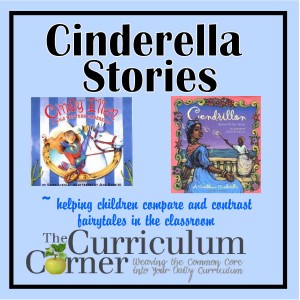 Cinderella stories are a great way to have students learn about fables and folktales from different cultures. Many students are familiar with the Disney version, but have not yet begun to explore how authors can write the same story in different ways. There are so many versions, you can pick the ones that you think will be best for your students. We have included some we like at the bottom of this post.
Cinderella stories are a great way to have students learn about fables and folktales from different cultures. Many students are familiar with the Disney version, but have not yet begun to explore how authors can write the same story in different ways. There are so many versions, you can pick the ones that you think will be best for your students. We have included some we like at the bottom of this post.
Here is the chart we have created for students: Cinderella Compare and Contrast
We like to begin this study with a read aloud of a classic Cinderella story. You can use the Disney version or another that is similar such as James Marshall’s Cinderella. After reading, discuss the characters, setting, problem and solution. We do not give our children anything to write on this first day, we like to just talk about what we have read. The next day we read a different Cinderella version without sharing that it is a different version of the story. (Most classes will begin to recognize similarities even if you choose not to let them know it is similar.) After reading the new version aloud, discuss similarities and differences. At this point we like to give students the compare and contrast chart. As a class, work to complete the first two rows. We suggest you also create a class chart on paper to help students follow along. Or, pull the pdf of the chart up on your smartboard, you can write directly on the chart! On the third day, choose a different version of the story to read aloud and continue to fill in the chart. You might also choose to have students complete a fourth section on their own as an assessment. Here is a printable to use for the final assessment: Cinderella Assessment.

Fairy Tale Unit of Study
Friday 9th of November 2012
[...] Our students have loved studying fairy tales! We are thinking we will follow up with a Gingerbread Man unit in December. Check back for this soon! You might also be interested in our Cinderella activities. You will find them here: Cinderella Stories Activities [...]